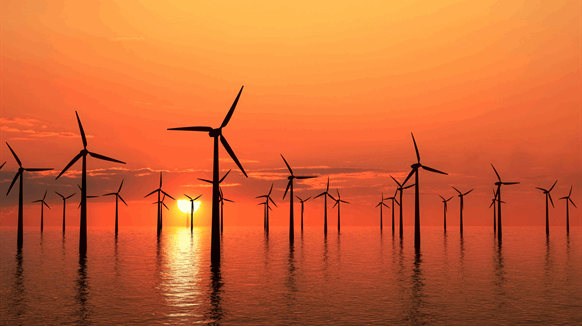Under the Biden-Harris administration’s goal to deploy 30 gigawatts (GW) of offshore wind power by 2030, the Bureau of Ocean Energy Management (BOEM) has selected three final Wind Energy Areas (WEAs) offshore Delaware, Maryland, and Virginia.
The three WEAs were developed following extensive engagement and feedback from states, Tribes, local residents, ocean users, federal government partners, and other members of the public, BOEM said in its media statement. If fully developed, the final WEAs could support between four and eight gigawatts of energy production, according to BOEM.
The three WEAs total approximately 356,550 acres. The first WEA (A-2) is 101,767 acres and located 26 nautical miles (nm) from Delaware Bay. The second WEA (B-1) is 78,285 acres and about 23.5 nm offshore Ocean City, Md. The third WEA (C-1) is 176,506 acres and located about 35 nm from the mouth of the Chesapeake Bay, offshore Virginia.
“BOEM values a robust and transparent offshore wind planning process, which requires early and frequent engagement with Tribal governments, the Department of Defense, NASA, other government agencies, and ocean users” said BOEM Director Liz Klein. “We will continue to work closely with them, and all interested stakeholders, as we move forward with our environmental review”.
BOEM said it will publish its notice of intent to prepare an environmental assessment of potential impacts from offshore wind leasing in the WEAs in the Federal Register on August 1, 2023, which it highlighted will initiate a 30-day public comment period. Another public comment period would occur if BOEM decides to move forward with a lease sale in any of the WEAs, the Bureau said.
BOEM said it partnered with the National Oceanic and Atmospheric Administration’s National Centers for Coastal Ocean Science (NCCOS) to develop a comprehensive, ecosystem-based ocean planning model that assisted in the selection of the final WEAs.
This model leveraged best available data on natural resources, ocean industries like fisheries and energy production, and areas of national security activities to identify areas with high wind energy resource potential while reducing potential impacts to other ocean users and sensitive environmental resources, BOEM noted.
This comprehensive approach not only provided valuable insights about the seascape and uses of the ocean region, but also facilitated greater transparency and positive coordination with government partners and ocean stakeholders through direct engagement and incorporation of their feedback into the NCCOS model, BOEM said.
On November 16, 2022, BOEM requested public comment on eight draft WEAs on the U.S. Outer Continental Shelf offshore North Carolina, Virginia, Maryland, and Delaware, covering approximately 1.7 million acres. The draft WEAs represented a subset of the original 3.9 million acres that the Department of the Interior identified for public comment in April 2022, the Bureau said.
The final WEAs are in comparatively shallow water, according to BOEM, which said it may identify additional WEAs in deepwater areas offshore the U.S. Central Atlantic coast for future leasing once further study of those areas has been done.
Additionally, BOEM said that, as part of its ongoing coordination with the Department of Defense and NASA, an in-depth review of WEA B-1 will continue to determine if their activities could co-exist with wind energy development. The results of the final in-depth assessment from DoD and NASA will be used to inform whether WEA B-1 should be included in a possible lease sale, which would be the next step in the wind energy process, BOEM stated.
There would be another public comment period if BOEM decides to move forward with a proposed lease sale, and if Area WEA B-1 is included in a proposed lease sale, any necessary mitigation would be identified to inform bidders in advance of a future sale, the organization said.
To contact the author, email andreson.n.paul@gmail.com


